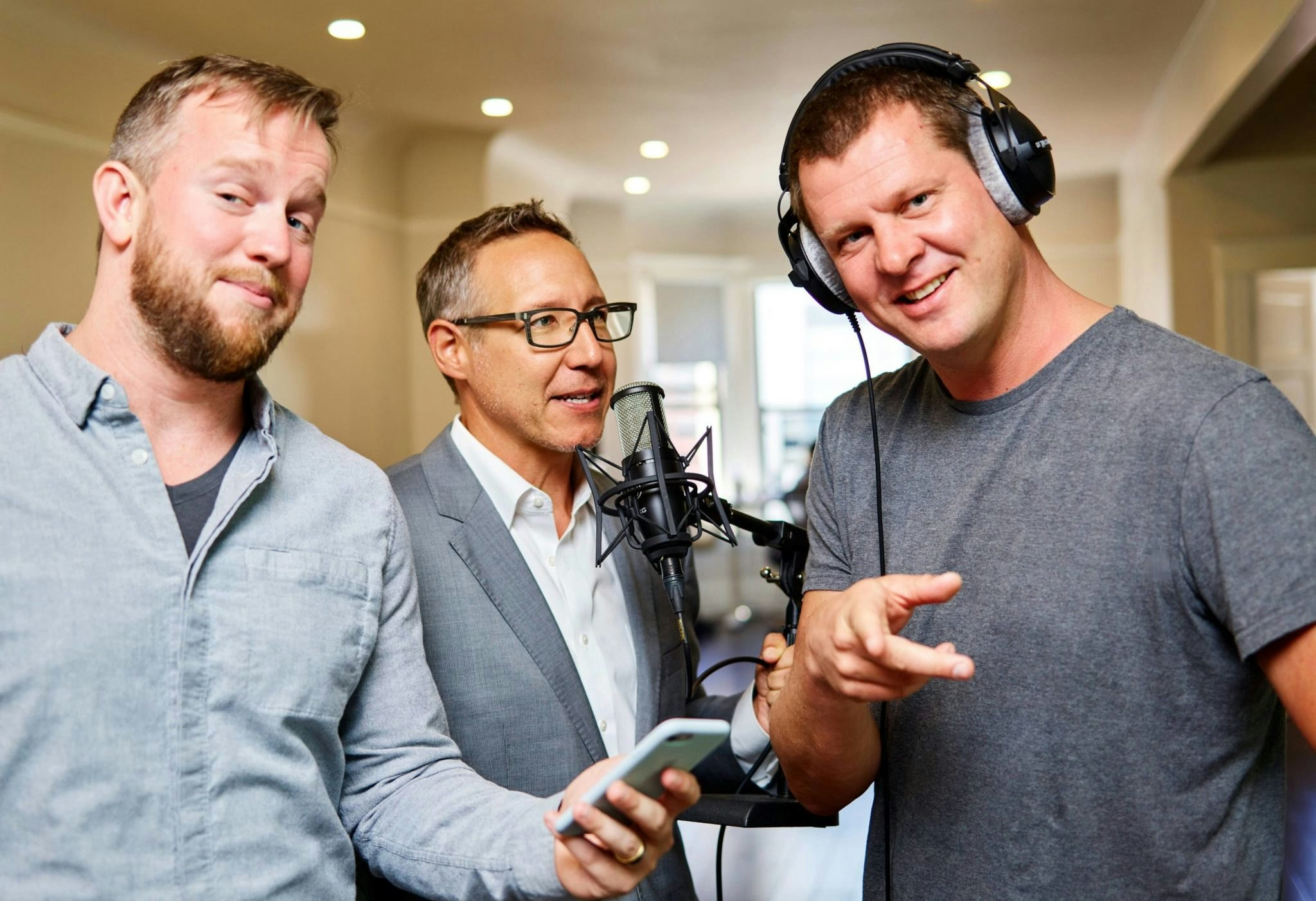
Founder Stories: Drivetime
February 12, 2019
Americans spend a collective 2.5 billion hours in their cars every month, commuting to and from work, mostly by themselves. Why shouldn’t they be able to play games while they drive? Drivetime asked themselves this question and built a game for the neglected millions who need interactive entertainment the most – drivers stuck in traffic. Building on years of experience in game development, and using state-of-the-art voice recognition software, Drivetime creates a safe environment for commuters to play games.
We were drawn to Drivetime by the founding team’s experience in game design and their desire to build a product that had a positive impact on the gaming community. We participated in the first round of equity capital raised by the company and they became part of our creative economy portfolio.
We recently visited with Drivetime founders Niko Vuori, Justin Cooper, and Cory Johnson at their San Francisco headquarters to get a behind-the-scenes look at making of their show as well as ask them a few questions about entrepreneurship, challenges in starting a business, and the creative economy. Here is what they had to say.
What is Drivetime?
Niko: Play games while you drive. Humans are hard-wired to play games every waking minute of the day, but until now, that has not been possible in the car. Drivetime is finally bringing games into the car, for the driver, in a safe and social way, to make the commute delightful.
What problem are you trying to solve?
Cory: We want to make the commute delightful. So many of us get to work and get home every day exhausted, stressed, and even depressed – just from the monotony and drudgery of the daily commute. We believe providing safe interactive entertainment for commuters has the potential to totally turn their day around.
Niko: The commute sucks, everyone knows this. And so what we are trying to do is to fix that. Until now, only passive audio experiences have been available in the car for the driver (FM/AM radio, podcasts, audio books, streaming music). What we want to do is to make that audio experience interactive – play games, engage with friends, compete, have fun – in a way that is unexpected and delightful.
Justin: People should be able to play games using just their ears and voices during long, boring drives. For years I’ve been shouting answers at “Wait, Wait, Don’t Tell Me”, “Says You” and other radio game shows during my drive- and while the experience was better than nothing, the absence of interaction always felt sorely lacking. Regular digs through the app store to find games to play hands-free and eyes-free never turned up anything- so I decided that it was finally time to roll up my sleeves, figure out why these games didn’t exist and make them. And since, surely, I am not the only person who likes to play games and is regularly stuck in a car, I thought others might want to play these kinds of games, too.
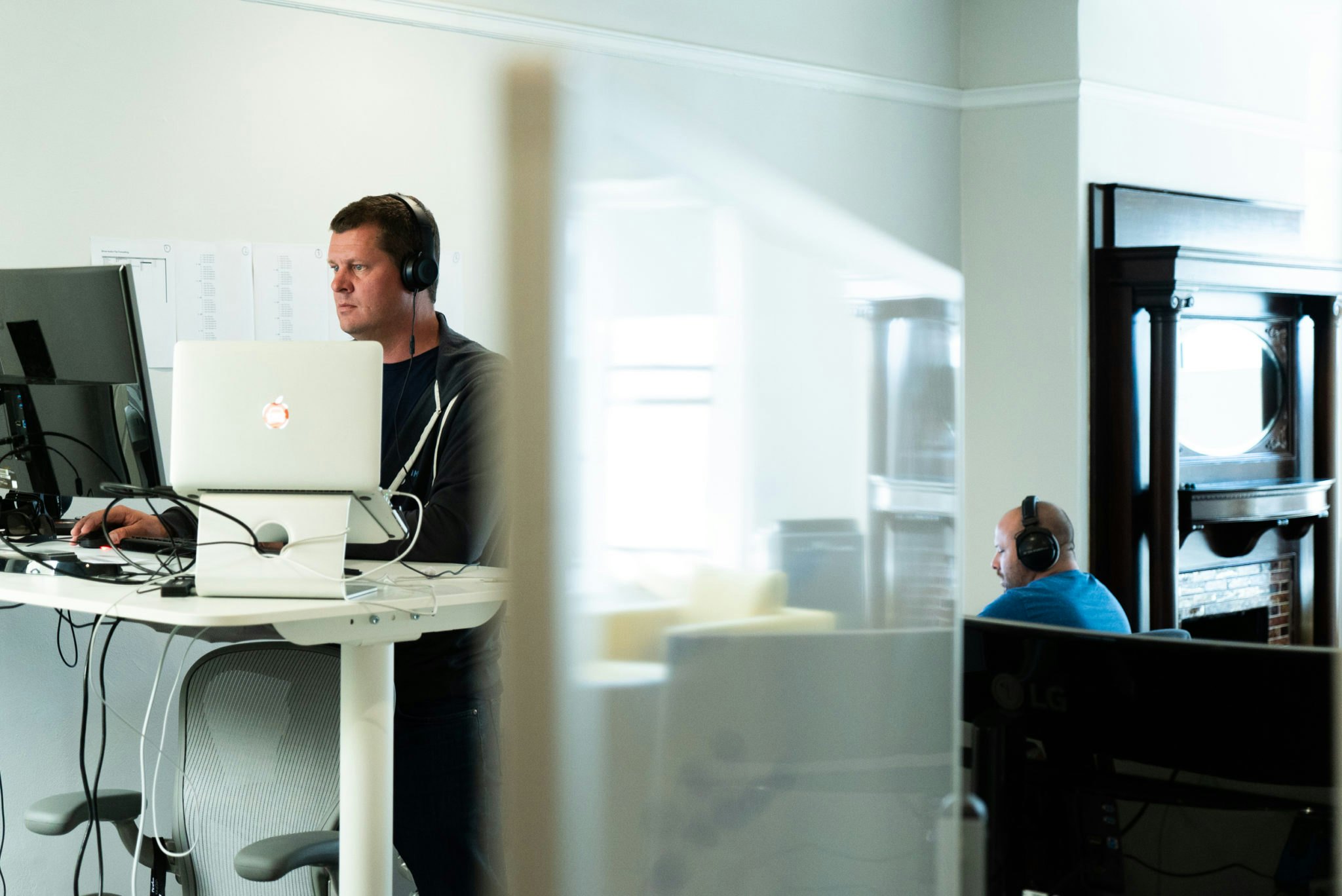
Describe your path to what you are doing now.
Niko: The path to get here has been a personal one for me. In 2013, I moved from San Francisco, where I walked and biked everywhere, to the East Bay, where I became one of the 110 million solo commuter drivers in America. The Bay Bridge toll plaza became my own personal hell. At around the same time, Amazon started to gain traction with the Echo hardware device for the home, and speech recognition technologies improved dramatically. Fast forward to late 2017, and suddenly all the ingredients were there for something like Drivetime to exist, and we jumped at the opportunity. Cellular data connections are now good enough, ubiquitous and, most importantly, unmetered. Speech recognition software is available from multiple vendors, in the cloud, via API, at commodity prices. Every commuter has a smartphone. And thanks to Amazon and Google, talking to devices is not weird anymore!
Cory: I was fortunate enough to start programming as a hobby when I was 9, and supposedly I learned to read as a kid from watching my parents play video games and having them read every line off of every screen to me. At some point I eventually realized that video games and programming went hand-in-hand, and the rest is basically history – I did everything I could to break into the industry by my freshman year of college, eventually came out to San Francisco to work at Zynga, and met Niko and Justin not too long after that. I’ve started a few other companies myself along that journey, so when the opportunity arose to start something right at the edge of the voice gaming frontier, I couldn’t resist.
Justin: If I boil it down, my path is this: every few years, a new way to play and distribute games emerges– and whenever that happens, I love to jump in and see how I can help. I started my career in games 20 years ago making little games in Macromedia Director that I could share by passing around a floppy disk- then CDs. In 1998, the Internet exploded and I joined a startup called Pogo.com, later acquired by EA. I spent a decade at EA/Pogo.com as the Director of Design making some of the world’s first online casual games and building one of the first online game communities. I left EA to join Zynga as its VP of User Experience. At the time Zynga was just a small team of people releasing quirky little games on this new thing called “social media.” After designing Facebook apps for a few years, I helped Zynga launch some of the world’s first iPhone game apps. After leaving Zynga, I continued to make mobile games- and in the process met my partners, Niko and Cory. And now I’m building games that you can enjoy while driving your car.
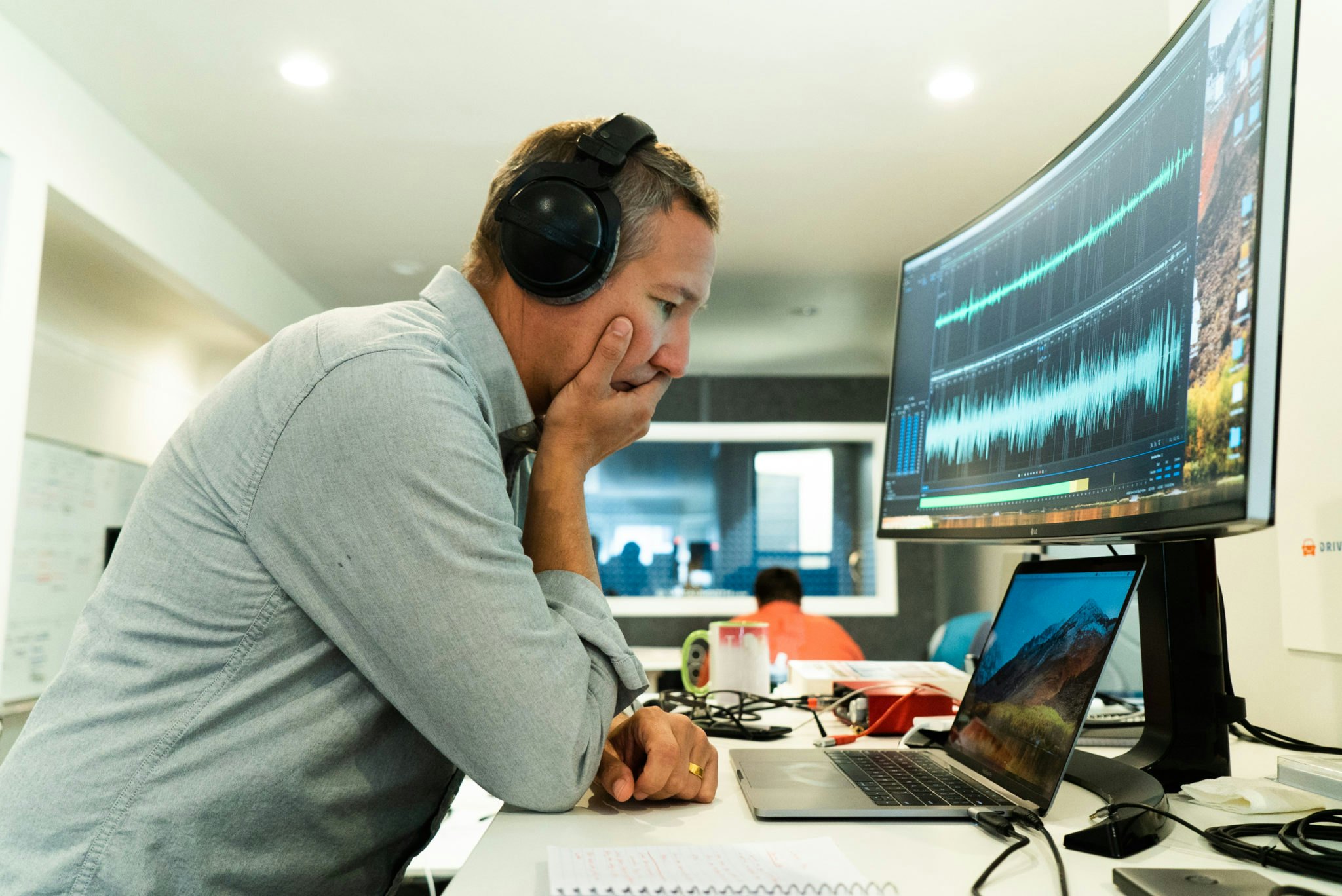
What challenges did you face trying to start Drivetime?
Cory: On the technical side, our biggest challenges so far come from simply being on the cutting edge of voice interaction in the car. We face some very unique and unexpected challenges running all the way through the hardware level related to how many automotive head units weren’t really built to be used this way yet, and I’m very proud of the novel solutions we’ve come up with to address this in a way that feels seamless to our players.
Niko: Driver safety is a question that (rightly) came up (and still does) all the time. “Is it safe?” “What about distracted driving?” This is of course something that we care deeply about, and we would not have launched our product unless we felt it was 100% safe. We are very happy to say that playing Drivetime is actually safer than alternatives (including silence) – and that’s for a two fold reason. First, multiple studies have shown that engaging in mildly interactive non-driving activities boosts alertness. And second, while engaging with Drivetime, drivers are not engaging in other, potentially distracting, activities on their mobile devices.
Justin: On the design/production side, one of the biggest challenges with building Drivetime was building the production pipeline for a product that requires 30+ minutes of new content, 5 days a week, 52 weeks per year. I was used to producing game features and graphic content on a regular basis, but the delivery of near-real-time audio required an entirely different set of people, processes and resources. It took months of iteration to work out the major kinks– and we’re still finding ways to improve quality, reliability and efficiency. Another challenge, not surprisingly, is designing for an interface that is entirely linear. As a visual designer, you get used to offering multiple choices at the same time. With audio, it’s one word at a time- so you really have to boil it down.
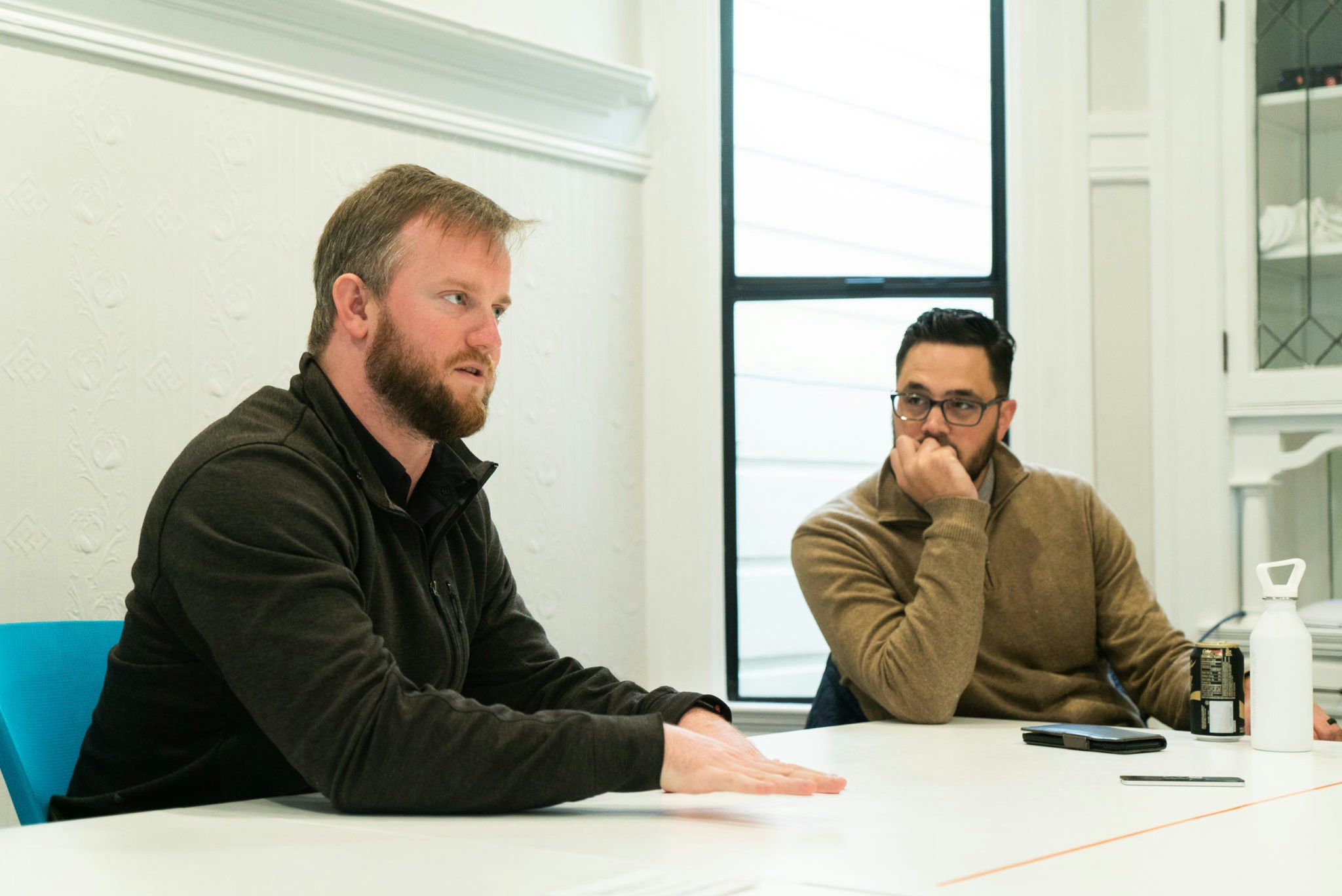
How would you define entrepreneurship?
Cory: I think of entrepreneurship as the meeting of problem-solving and economics “at the edge”. You identify a problem, a solution missing in the world – but you also have to find a solution that exists on the plane of economic feasibility. With Drivetime, for example, this problem – that the commute sucks – has probably been identified countless times in the past, but we saw a unique confluence of technology and infrastructure in 2018 finally open up the path to an economically viable solution.
Niko: Entrepreneurship, for me, is very simple – identify an underserved market, and serve them, by building something new or better.
Justin: The only thing I’d add to Cory and Niko’s thoughts is that as you’re doing all of that identifying, problem-solving and building, a willingness to take calculated risks and wade into the unknown without completely losing your nerve is a useful trait.
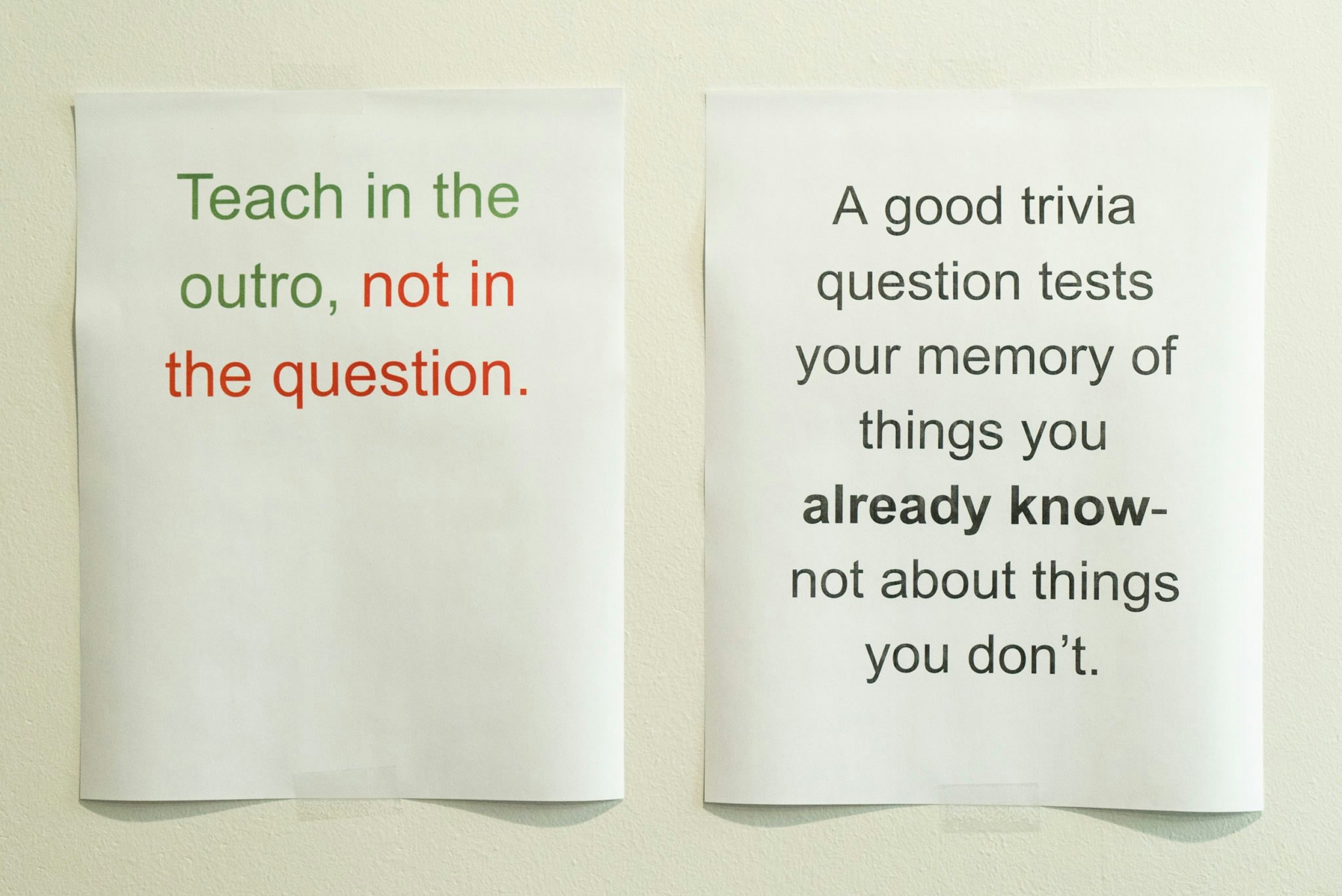
What are you most excited about?
Niko: We’re barely scratching the surface of what’s possible through voice technologies, and the kinds of product offerings that are going to be deliverable to the driver of the car. Today it’s Drivetime trivia, but tomorrow it’s language learning or interactive fiction or SAT test prep or mindfulness or any number of life-improving and life-enhancing activities. The sky is the limit, and to be at the forefront of this industry is incredibly motivating and exciting.
Justin: We have a double-barreled margarita machine that we fire up for Friday meetings that is pretty awesome. Additionally, I’ve been really excited about just how good speech-to-text and text-to-speech tech has gotten over the last 24 months. It’s taken a long time to get to where it is, but the rate of continued improvement is staggering and I’m excited to make use of it AND to see how other people use it. Oh, and 5G! I know that’s not fashionable to say (all the cool kids are so over it!), but over the next few years, as the network and hardware rolls out, it’ll be a game-changer, literally.
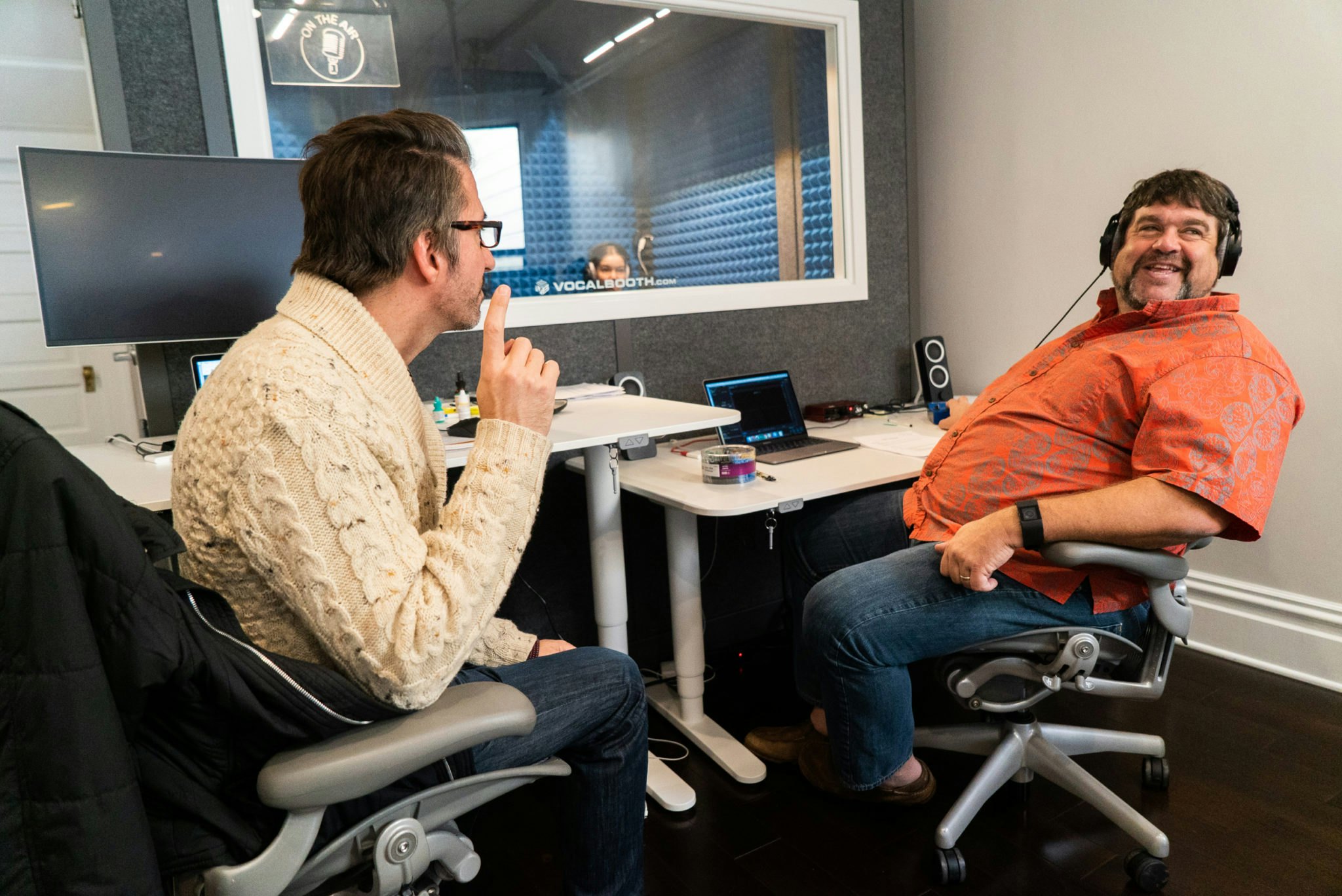
What does a normal day for you look like?
Niko: No such thing!
Cory: Seconded – no such thing.
Justin: I must be doing something wrong… I have a routine that doesn’t change too much. First I put out any fires, then I review and adjust my todo list (I use the “Things” app) and then I walk down the list as efficiently as I can until it’s time to go pick up the kids from school. What’s on the list changes day-to-day, but how I tackle it doesn’t.
What’s the most fun part of your job?
Niko: The joy we spark in our players. We have a feature called Player Talkback – 10 seconds at the end of every show during which the players can say whatever they want. We transcribe that from speech to text, and pipe it into Slack. It is incredible what our players tell us, and overwhelmingly it is positivity around how much better their commute now is, thanks to Drivetime!
Cory: Exploring the unknown. This is the first time I’ve gotten to be right on the cutting edge of a totally new interaction space, and it’s so fun. It can be pretty nerve-wracking to truly not know if something is even going to be technically feasible with the constraints you’re under, but at the same time it really is worth those extra headaches and challenges when you see it all come together for the first time.
Justin: Did I mention the double-barreled margarita machine already? Honestly, it’s the people. We’ve done a great job hiring awesome people who are great to be around. Drivetime is staffed by smart, hard-working people who also happen to be funny and kind. They’re a joy to be around.
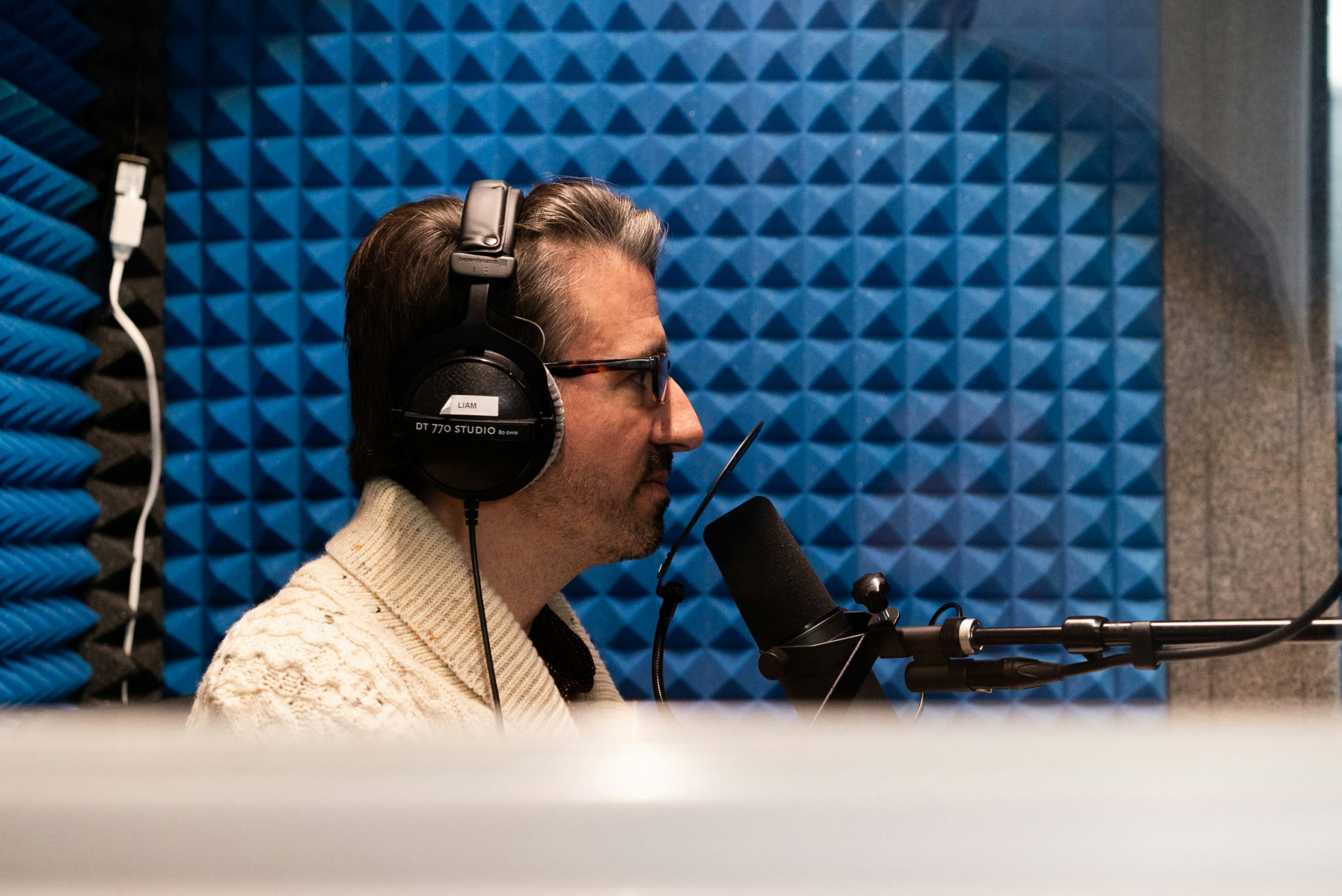
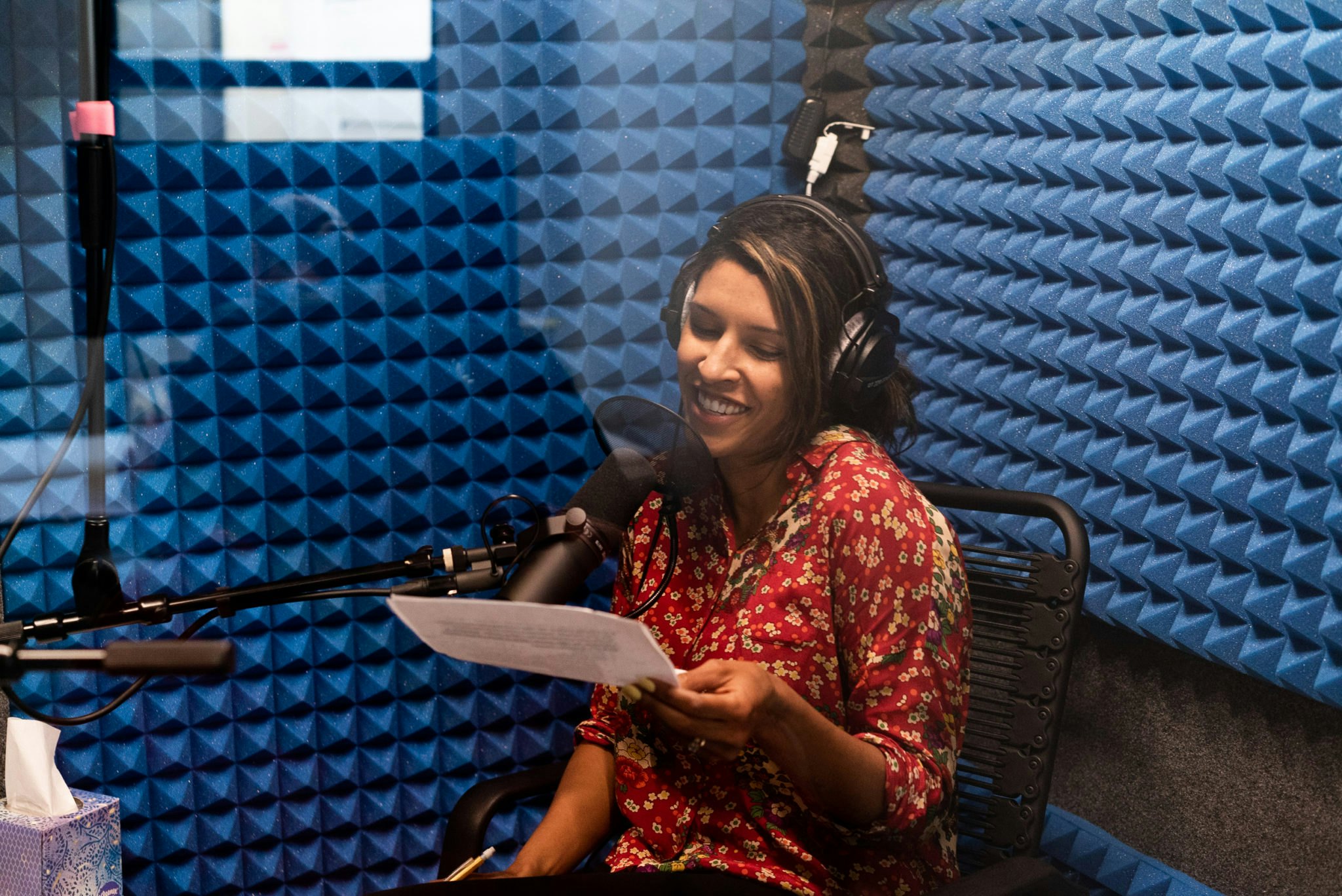
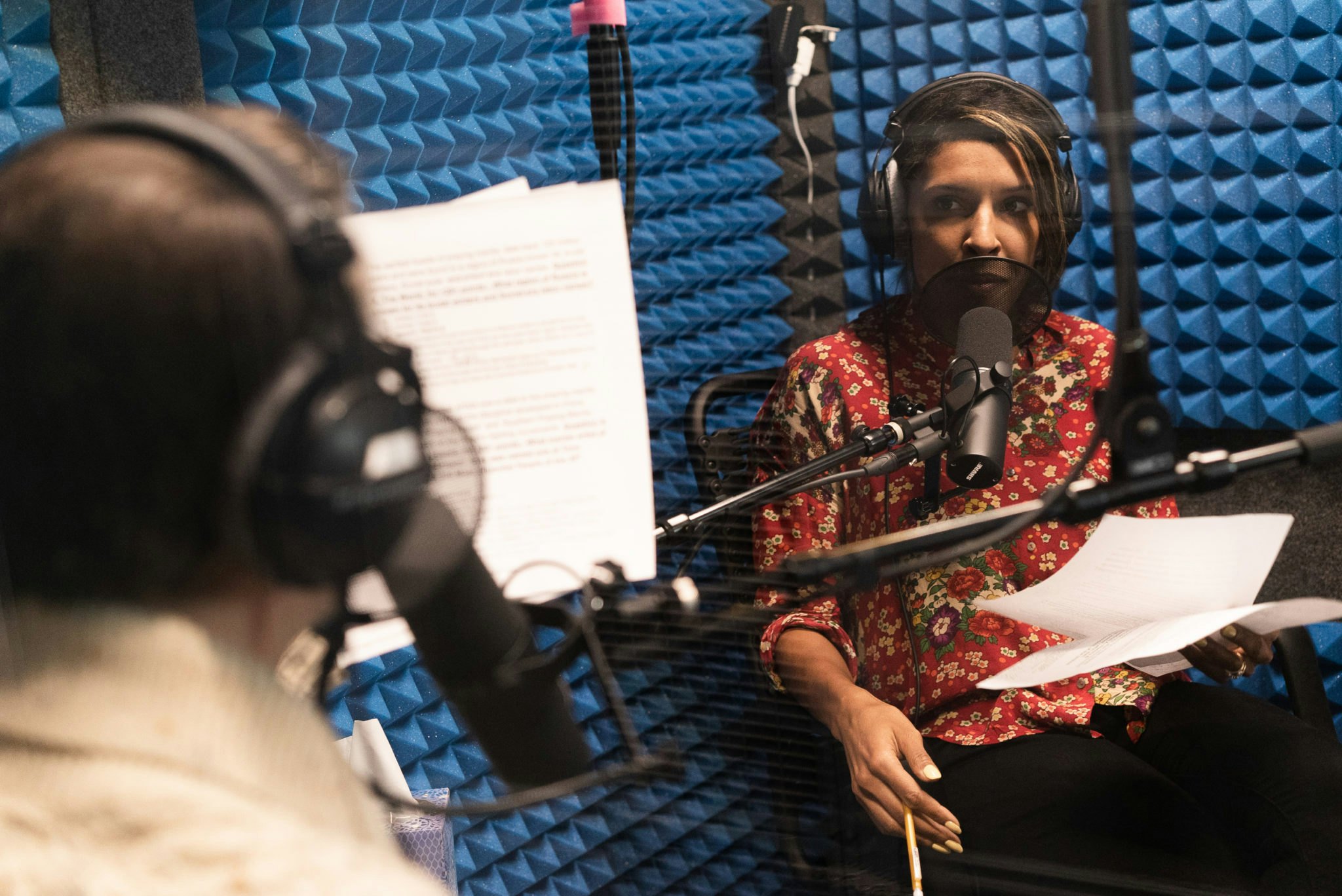
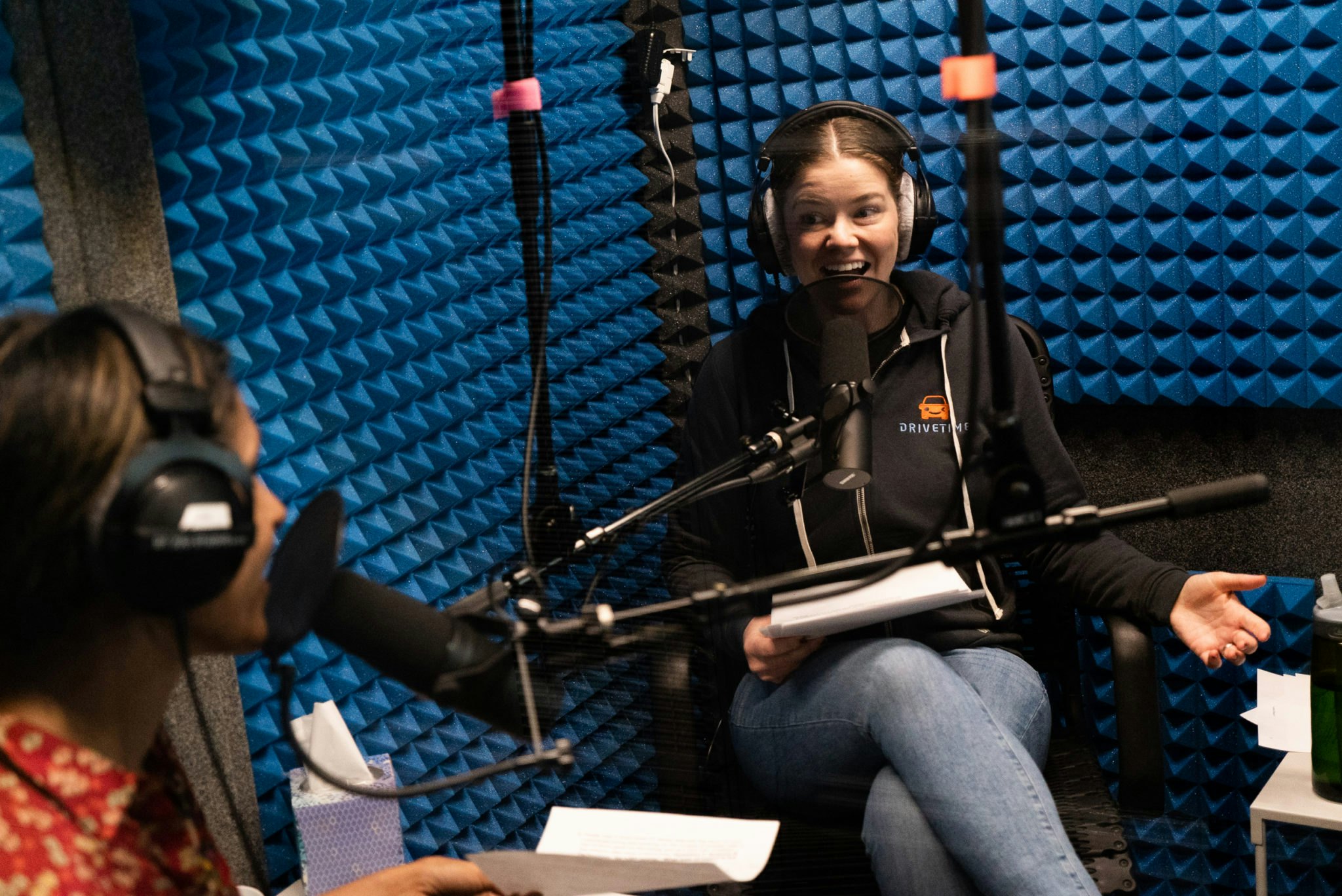
What goes into the making of one episode?
Niko: It takes a village! We need amazing writing for both the trivia as well as the humor, copy editing of both, recording the session with our talented hosts, live in-the-moment direction, sound editing, review, QA, packaging the audio files into the correct format, loading into the Content Management System, technical review and finally pushing it live. When we first started out in private alpha, we could barely get an episode out a week. Now, we are able to produce multiple episodes a day!
Justin: Oh man! So much! I could go big on this question, but I don’t think you want to get into the weeds (as fascinating as I find them). I suppose it’s probably enough to say that by the time someone listens to a show, we’ve been working on the concept for about two months. Not including engineers, about eight people have a hand in each show’s production, from writers to hosts to producers to editors to QA.

What advice would you give to someone new joining your team?
Cory: “Be humble, stay hungry, and hustle hard.” Our main three values as a company are People, Think Big, and Getting It Done – and I think those three practices map well to these three core values.
Niko: When you join the team, respect your co-workers – but also your family and friends. When you join the team, get behind the big vision – but also the day-to-day. And when you join the team, bias towards action – but make sure that action is in pursuit of the broader company goals.
Justin: Don’t touch Bill’s Coke Zero. I mean it.
What role is Drivetime playing in the creative economy?
Niko: Voice-driven entertainment is so new – and has so much potential in so many contexts. Drivetime is the first to be defining what that means in the context of the car, while driving, and that is an incredible and humbling position to be in. We hope to inspire many others with what we’re pioneering.
Justin: There is so much interesting stuff going on in the voice-control space and in the expansion of interactive media into radio and television. We’re taking a leading position in the area of interactive in-car entertainment– and while I want us to maintain our dominance in this area, I’m eager to see other people enter the space. Anyone thinking of getting into the auto space is going to have to solve some of the same problems we’ve had to address and I’m interested in knowing if anyone comes up with better ideas than we have. Looking at the creative economy as a whole, while we don’t consider games designed for in-home devices like Alexa, Google Home or Homepod as competitors (until they make their way into the car), there is clearly a lot of crossover and we’re always looking there for inspiration and other signals.
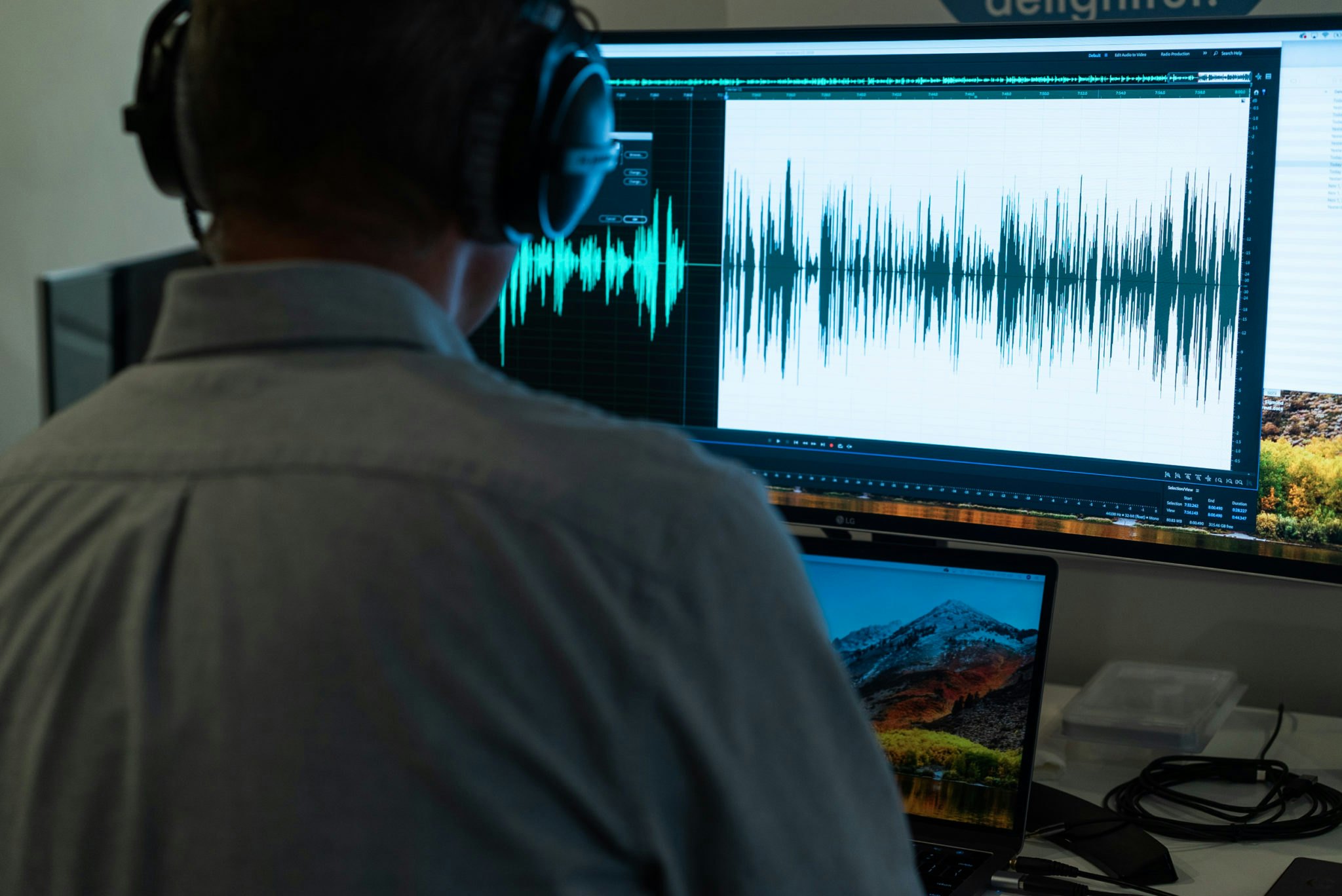
What does the future of Drivetime look like?
Niko: We have an opportunity to be the interactive Sirius XM. Our goal is for Drivetime to become synonymous with interactive entertainment in the car. Drivetiming becomes a verb.
Justin: I believe that it was George Orwell who said that “if you want a vision of the future, imagine a boot stamping on a gas pedal while playing tons of crazy-awesome Drivetime games in your car- forever.” Or something like that.
Are you creatively satisfied?
Niko: Are you kidding? Can there be a better feeling than building something that has not existed before that is loved by your customers and is solving a very real need and pain point?
Cory: Most of the time, absolutely. I think there are always low valleys along the way in something like this where things feel like a grind for a bit, but the average day is extremely creative, even compared to what I’ve been fortunate enough to work on in the gaming space in the past.
Justin: Yes? On average I’m creatively satisfied once a week for about 30-45 minutes. That is then followed by a slowly growing sense of dissatisfaction that can only be satiated by knocking the next big thing off of my todo list. Is it OK to share that?
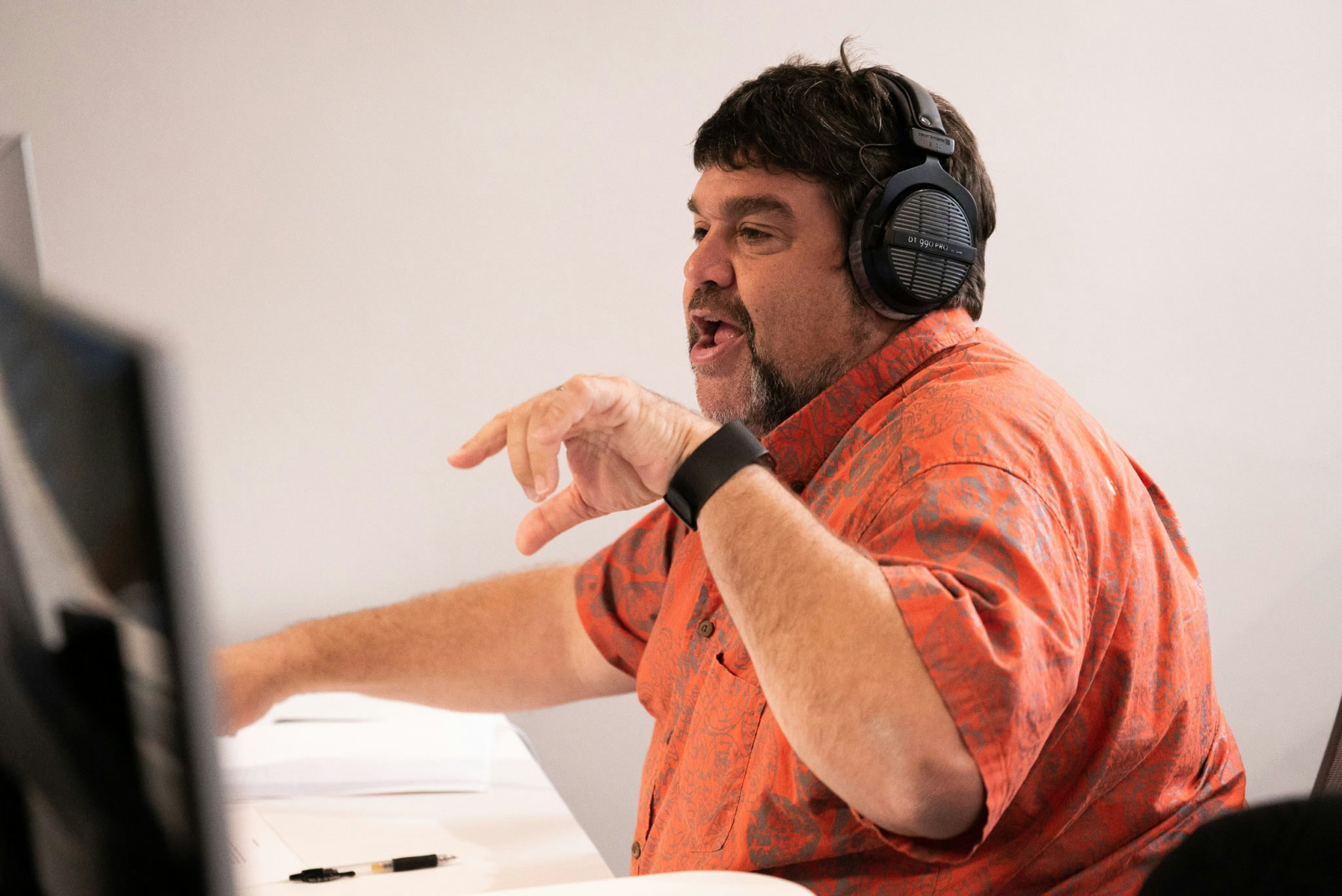
What’s one life rule you abide by?
Cory: “Make it better.” Whether it’s a daily practice we’ve had for years, or a new daunting obstacle that’s just appeared, keep going and keep pushing to improve our current situation, and make ourselves better than we were yesterday.
Niko: “Don’t be a blocker.” That’s literally the only “rule” we have at Drivetime, and a rule I personally live by, and it basically means that no one should ever be in a position to be holding somebody else up. Human potential is unleashed when allowed to move forward – but if someone else is blocking you for whatever reason, that potential becomes frustrated and ultimately withers and dies.
Justin: “Leave things better than when you found them.” There are lots of others, but this is the one general rule that I strive for, whether it’s about a product, a feature, a business, a pile of dishes, a friendship. The challenge is always about how that primary rule interacts with the law of diminishing returns and with the fact that we all have only so much time to work with.
What’s one thing you want to do more of?
Cory: Leadership development – for ourselves and the entire team. In a broader sense you could also say “developing the culture” for the company, but I believe that good leadership skills are at the core of the rest of the company’s culture, and fostering good leadership instincts across the team will naturally result in the culture we want to have.
Niko: Involvement in day-to-day team routine – so much of my time is fragmented and broken into half hour chunks requiring drastic context shifting.
Justin: Exercise. Between work and family, it’s so easy to overlook the massive benefits of exercise.
Learn more about our investments in the creative economy here and download the Drivetime app here.